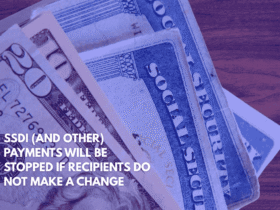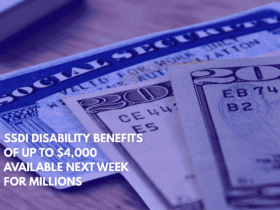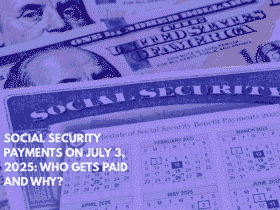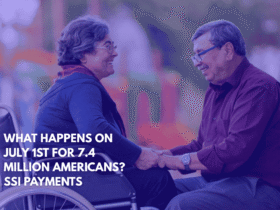Social Security Disability Insurance (SSDI) is a vital lifeline for millions of Americans who are unable to work due to a disability. As we move into April 2025, many SSDI beneficiaries are preparing for their monthly payments — and it’s important to know exactly when you’ll be paid, how much you could get, and what recent rule changes might affect you.
SSDI Payment Schedule for April 2025
SSDI payments in April will be made on four different dates, depending on when you started receiving benefits and your date of birth. Here’s a simple breakdown of how it works:
April SSDI Payment Dates:
April 3, 2025
For two groups:
- Those who started receiving benefits before May 1997
- People who get both SSDI and SSI
April 9, 2025
For those whose birthday falls between the 1st and 10th
April 16, 2025
For those born between the 11th and 20th
April 23, 2025
For those born between the 21st and 31st
Important: If you receive both SSDI and SSI, your SSDI payment is always issued on April 3, no matter when your birthday is.
Maximum SSDI Benefit in April 2025
In 2025, the maximum SSDI payment a person can receive is $4,018 per month, up from $3,822 in 2024. But it’s important to understand that this is the highest possible amount and applies to only a small number of recipients.
How to Qualify for the Maximum:
To get close to the maximum amount, you must:
- Have earned high wages consistently over many years
- Have paid enough Social Security taxes
- Accumulated enough work credits (based on your income and work history)
Most SSDI recipients won’t receive this amount. In fact, less than 1% of SSDI beneficiaries qualify for the maximum. The actual monthly amount depends on your average lifetime earnings before your disability.
SSA Identity Verification Rule: What’s Changing?
Recently, the Social Security Administration (SSA) proposed a rule requiring certain applicants to appear in person for identity verification. The plan triggered major backlash from disability rights groups and lawmakers.
What Happened?
Originally, the SSA wanted to make in-person verification mandatory for many Social Security processes, including SSDI. However, after public outcry and concern from over 40 Democratic congressmen, the agency rolled back the rule for specific cases.
Who’s Exempt from In-Person Identity Verification?
You will NOT need to verify your identity in person if you are:
- Applying for SSDI
- Applying for Medicare
- Applying for basic financial assistance
This is especially helpful for people in remote areas, with disabilities, or with limited access to transportation or technology.
The rule will now take effect on April 14, 2025, but only applies to procedures like changing your bank details or starting general Social Security benefits (not SSDI, SSI, or Medicare).
Why the Rule Was Controversial
Many argued the proposed rule would hurt vulnerable people who already face mobility, access, or financial challenges. Critics said it wasn’t backed by clear evidence of fraud and would create unnecessary barriers.
The SSA says the changes are meant to modernize and prevent errors, while still allowing for exceptions in special cases. They also promised to keep “alternate channels” open for those who truly cannot attend in person.











Leave a Reply